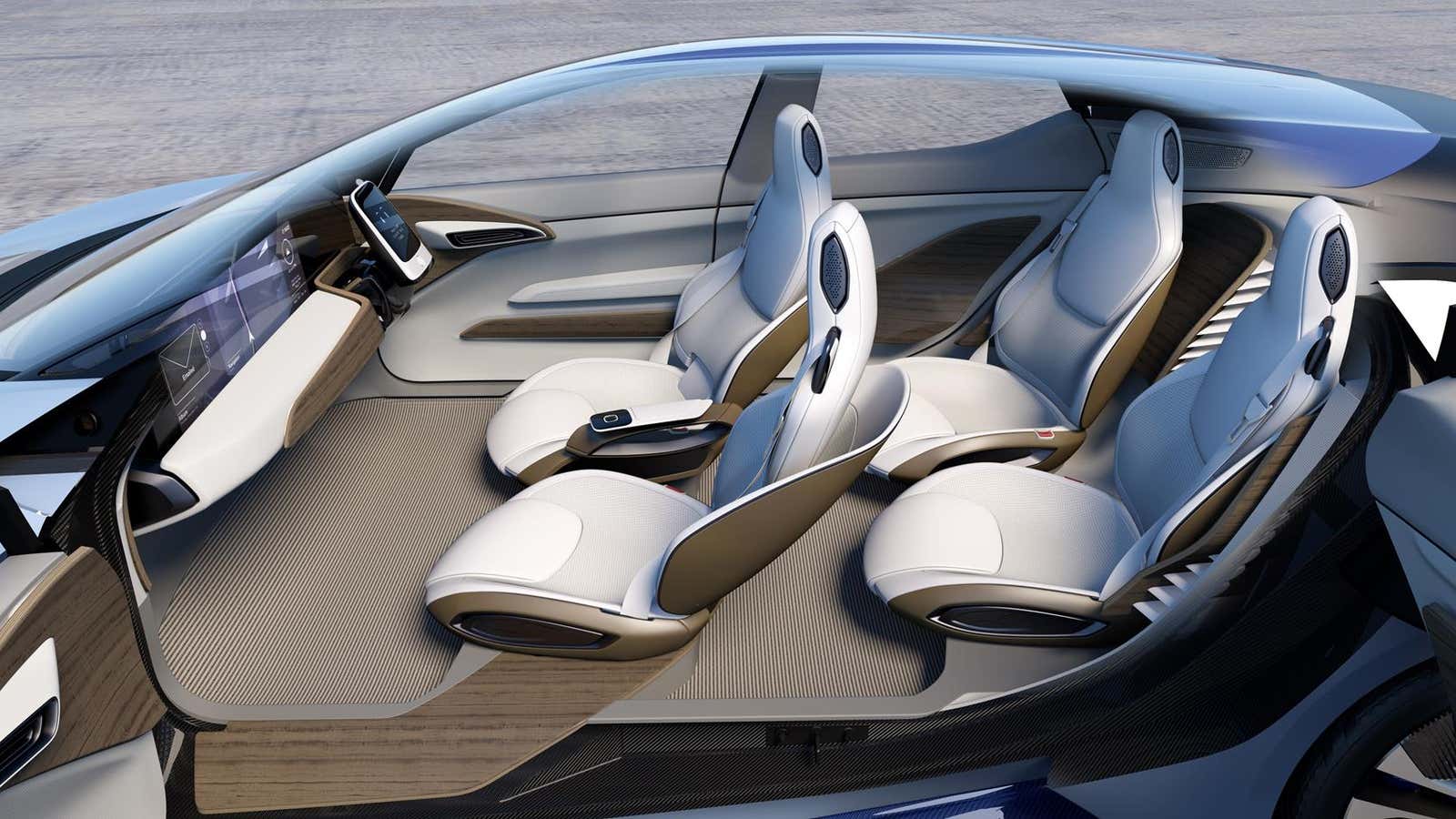If you’re an average consumer, you’ve had little reason to take electric cars seriously—they cost too much, and don’t go far enough on a charge. But starting about this time next year, you will.
It’s hard to keep track of all the competing mainstream electrics coming soon to showrooms, as major automakers show an accelerated determination to shift these hitherto luxury vehicles into the mass market. But the number appears to be a half-dozen and growing, a sign that they not only want to look like good guys who care about the Earth, but also to sell a lot of cars.
These cars will cost roughly $30,000 to $45,000—which is upper-range mainstream pricing—and will go 200 miles or so on a charge, probably sufficient to relieve fear of being stranded in the dead of night in a snowstorm. But price and lessened range anxiety aren’t the only reasons why average motorists are likely to give these vehicles a hard look: Automakers also are twinning pure electric driving with their showcase technology, in particular autonomous functions.
GM’s Bolt, Nissan’s Leaf
The first of these technology-stuffed electrics out will be the GM Bolt. At less than $30,000 after government rebates, the Bolt was supposed to reach showrooms in 2017, but GM, sensing the stampede of rivals, speeded up production. Being the early mover, however, doesn’t mean the Bolt is the car—if you do buy electric this time—that you’ll grab.
That became clear Oct. 27, when Nissan unveiled a concept car (pictured above) in Tokyo that appears to be more or less the model for the remake of its workmanlike Leaf.
Technically speaking, average motorists have been able to buy a pure electric since 2010 with the first version of the Leaf, which was priced under $30,000. But until now, the Leaf has gone just 70 or 80 miles on a charge, which is a big reason why only 200,000 of them have sold worldwide in the five years since (by comparison, the 14 top-selling vehicles in the US each had more than 200,000 in sales in the first nine months of 2015 alone).
But the electric concept Nissan displayed in Tokyo could, by 2020, transform the Leaf into a sleek, fashionable sedan with full autonomous functionality. If this is more or less the new Leaf, and it sells in the same price range as the Bolt, GM is going to have to either slash its own price or go back to the drawing board; this Leaf raises the bar.
Tesla’s Model 3, Apple’s secret project
The cool Nissan is improbably also a challenge to the two apparent frontrunners in the electrics race—Tesla and Apple. In March, Tesla will unveil the model for its mainstream Model 3, a not-yet-in-production car that has served as the singular driving factor behind the electric segment’s rush to the middle-market.
It’s Tesla CEO Elon Musk who has set the parameters for the market—$35,000 and 200 miles—and unnerved everyone with the huge splash of his Models S and X. Ever since then, the car industry has reacted to the Model 3’s coming with an utter fear, resembling how bad guys responded to Bob Valdez.
Musk says the Model 3 will go on sale by the end of 2017, but, giving breathing room for the usual glitches, is more likely in 2019 or 2020. Meanwhile, Apple is working furtively and stealthily on its top-secret Project Titan; no one outside the organization knows what part of the market Apple is aiming for with its contribution to the electric car industry, or precisely when we will see it. But, besides the Model 3, it will be the one model that motorists will be certain to keep an eye out for.
Mind you, battery electrics are not the only electrics
A smaller number of carmakers, while joining the electric race, are betting against the battery. Toyota and Honda are launching electrics that operate off of hydrogen fuel cells—the Toyota Mirai, which has gone on sale in California, and the Honda Clarity, which is set to reach the Japanese market next year. In addition, Mercedes is launching the F Cell in 2017.
The fuel-cell cars are still outside mainstream pocketbooks—the Mirai is priced at about $58,000, and the Clarity at around $63,400. But they beat the battery electrics both on distance—the Clarity, for instance will go 400 miles on a charge—and on the time it takes to charge; driving up to a hydrogen pump (if one can be found), a motorist can charge a car fully in just three to five minutes.
